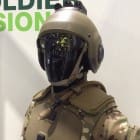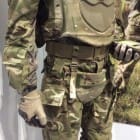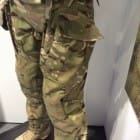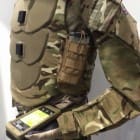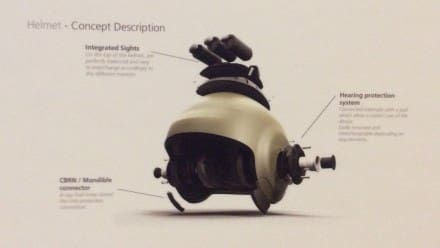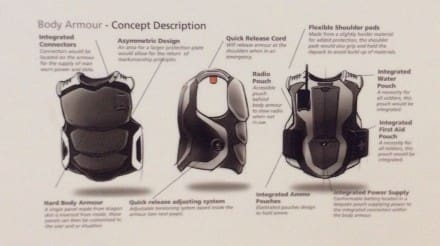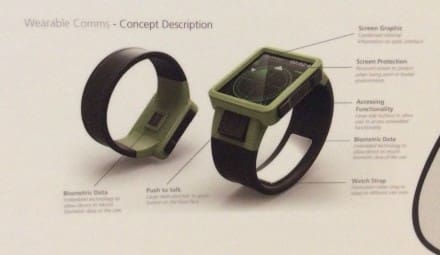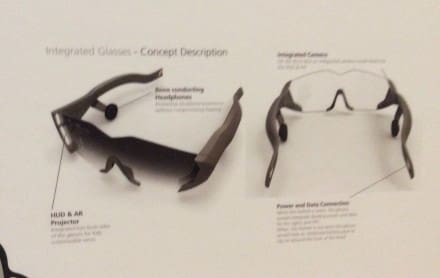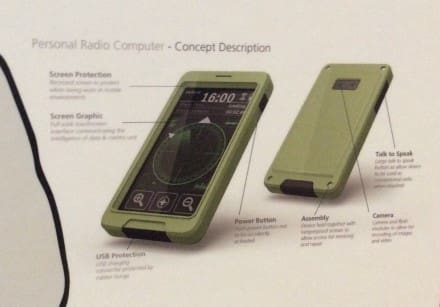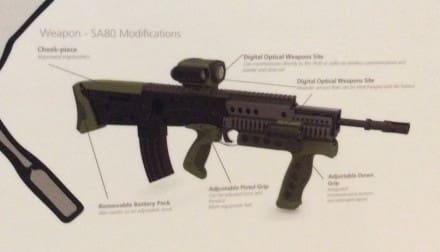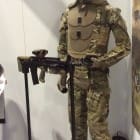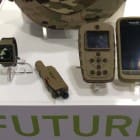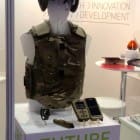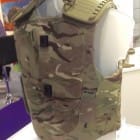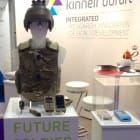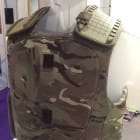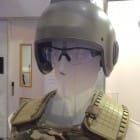At DSEI we got to take a look at the Future Soldier Vision, the UK Ministry of Defence’s Defence Science and Technology Laboratory’s conceptual vision of what the Soldier will look like in 2024.
Head Sub-System
Soldiers will have enhanced multi-spectral sensors enabled by modular integration, to provide mission-tailored systems at significantly reduced weight. Sensors will be capable of fusing their feeds and being shared between soldiers, providing collaborative targeting and engagement capabilities. For example this network capability will enable small unmanned aircraft systems to provide commanders with enhanced battlefield surveillance and target acquisition.
– Integrated sensors
– Integrated power supply
– Hearing protection system
– Respirator/mandible connector
Torso Sub-System
Soldiers will be able to tailor their protection according to the mission requirement, balancing protection with agility to provide optimal survivability. Future systems will consist of tiered, modular protection providing enhanced capability, without increasing weight. Design and integration with other elements of the soldier system will ensure legacy and future compatibility.
– Hard body armor
– Ratchet adjusting system
– Integrated connectors
– Asymmetric design
– Quick release cord
– Flexible shoulder pads
– Integrated power supply
– Integrated load carrying
Wearable Communications Concept
The advent of a body sensor network will provide real-time reporting of soldier health. Sensors embedded in the helmet, clothing, and smartwatch will monitor physical health and performance. Wirelessly linked to the soldier processing system, the availability of this data will allow the commander to make informed decisions during combat. If the soldier is seriously injured, information will enable medics to act faster during the ‘golden hour’ following trauma.
– Biometric data
– Push to talk
– Screen graphic
– Screen protection
– Accessing functionality
Smart Glasses Concept
The presentation of real-time data will enable greater clarity and quality of information throughout the operational system.
– Heads up display with augmented reality presentation
– Bone conducting headphones
– Integrated camera
– Power and data connection
Personal Role Computer Concept
Commanders and troops will be provided with information across a set of connected devices covering visual, acoustic, and tactile interfaces to access voice, data, video, and historical information. The information architecture will ensure commonality of data, with each device determining the appropriate means of presentation. Navigation system will incorporate simultaneous localization and mapping technology and be capable of operating in a global positioning system-denied environment.
– Screen protection
– Screen graphic
– USB protection
– Push to talk
– Camera
– Assembly
Weapon Concept
Individual weapons will have improved ergonomics, with effects spanning combinations of lethal and non-lethal capabilities. The ability to seamlessly provide targeting information between soldiers and their units will allow collaborative engagement to become commonplace. The increase in timeliness and accuracy of multiple weapon systems will result in a more effective fighting force.
– Enhanced stock design
– Digital optical weapon sights
– Adjustable down grip
– Adjustable pistol grip
Although not specifically mentioned in the other technology areas, they also displayed this conceptual boot.
Much of the development work was accomplished by Kinneir Dufort. They also had a display of the system in their booth.
www.gov.uk/government/organisations/defence-science-and-technology-laboratory



